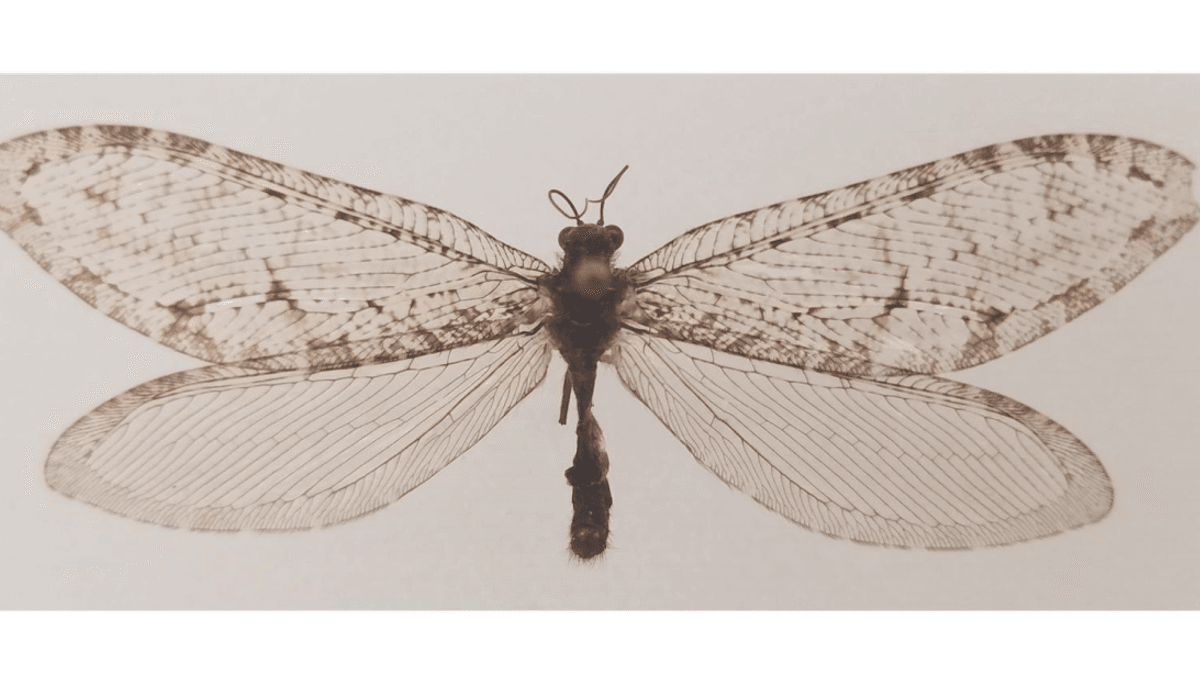
A Jurassic-era lacewing that’s been MIA for 50 years was plucked from inside the façade of an Arkansas Walmart. It’s the first record of the species ever in the state, and the first seen in half a century since the species mysteriously disappeared from North America back in the 1950s.
The Walmart-dwelling specimen was actually first found back in 2012, but it wasn’t until 2020 after teaching an online course that director of Penn State’s Insect Identification Lab Dr Michael Skvarla realized what he was looking at. The giant insect was, in fact, Polystoechotes punctata, a giant Jurassic-era lacewing.
“I remember it vividly, because I was walking into Walmart to get milk and I saw this huge insect on the side of the building,” said Skvarla in a statement. “I thought it looked interesting, so I put it in my hand and did the rest of my shopping with it between my fingers. I got home, mounted it, and promptly forgot about it for almost a decade.”
The record-breaking discovery unfurled in real time for a group of students enrolled in Entomology 432: Insect Biodiversity and Evolution at Penn State. During a Zoom lab Skvarla was demonstrating the features of an “antlion” specimen when the penny started to drop that some of them didn’t match up.
“We were watching what Dr Skvarla saw under his microscope and he’s talking about the features and then just kinda stops,” said Codey Mathis, a doctoral candidate in entomology at Penn State. “We all realized together that the insect was not what it was labeled and was in fact a super-rare giant lacewing.”
“I still remember the feeling. It was so gratifying to know that the excitement doesn’t dim, the wonder isn’t lost. Here we were making a true discovery in the middle of an online lab course.”
The discovery of Polystoechotes after its apparent eradication in North America demonstrates there may still be relic populations yet to be discovered in the region. That it was found in an urban area of Fayetteville, Arkansas, supports the suggestion that the area is a biodiversity hotspot, sitting within the Ozark mountains.
Despite this, it’s a relatively understudied area when it comes to biodiversity research, and so could contain a treasure trove of rare, thought-extinct, or as of yet undiscovered species within its habitats.
“Discovery doesn’t always hold that same kind of grasp on people that maybe it did 100 years ago,” said doctoral candidate Louis Nastasi, who was present in Skvarla’s live Zoom reveal of the giant lacewing. “But a finding like this really highlights that even in a run-of-the-mill situation, there are still a tremendous number of discoveries to make about insects.”
The study was published in Proceedings of the Entomological Society of Washington.
Source Link: Rare Jurassic-Era Giant Not Seen For Half A Century Found At... Walmart?